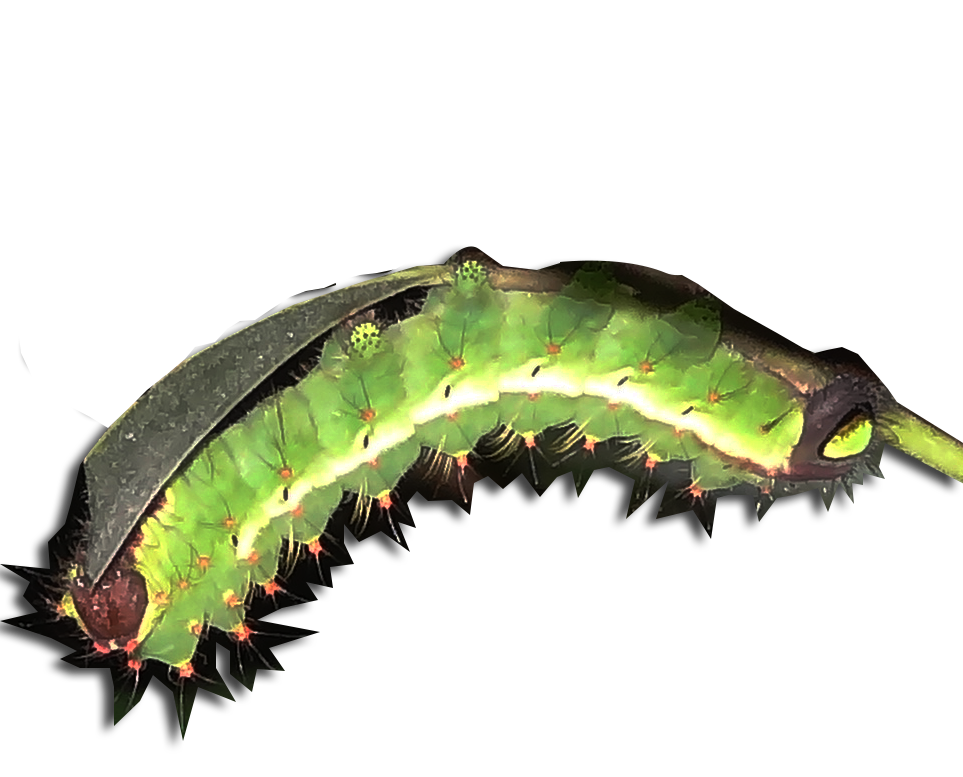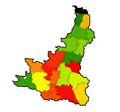Improved Mulberry Varieties
Mulberry Varieties for Various Agro-Climatic and Soil Conditions
Victory 1:
It is popularly known as V1. It is a selection from controlled pollinated hybrids of S-30 and Ber. C-776 during late 1990’s. The variety is characterized by erect branches and greyinsh stem colour. Leaves are thick, succulent, large, entire and ovate with truncate base. Leaves are smooth and glossy. It has got good agronomic characters like high rooting ability, fast growth and high yiled. Under irrigated conditions, with recommended package of pratices it yields about 60 mt/ha/year. Bioassay and chemoassay tests indicated the superiority of this variety for silkworm rearing.
S36:
The variety is charactrized by having short inter-nodes, semi-erect habit, medium branching, greyish pink coloured stem. Leaves are unlobed, cordate, glossy, pale-green with smooth surface, with recommended package of practices, it yields 35 – 45 mt/ha/year under irrigated conditions. Because of its high succulance and nutritive quality, it is recommended for youg age silkworm rearing.
S13:
Mulberry variety S-13 is a selection from open pollinated hybrids of Kanva-2 during 1986. The variety is characterized by short internodes and having a cpacity to produce large number of branches. Leaves are thick and green, unlobed with smooth surface. This variety is recommended for rainfed areas with red loamy soils and also for water scarce areas of Andhra Pradesh ahving high temperature. It yields 12 – 15 mt/ ha/ year under rainfed conditions.
S34:
The variety S-34 is evolved from cross-pollinated hybrids of S-30 and Ber. C-776 during 1986. The variety is fast growing has deep and extensive root system and it adopts well under soil moisture stress conditions. Leaves are medium to large, unlobed and dark green in colour with high moisture content and good retention capacity. It yields about 12 – 15 mt/ ha/ year under rainfed conditions. The variety is recommended for black cotton soils.
Sahana:
Sahana is evolved from cross-pollinated hybrids of K2 x Kosen during 2000. It is charactrized by medium branching, fast growing, slightly spreading, pinkish-grey brnaches with short internodes. Leaves are large, unlobed, thick, cordate, glossy and dark green. The variety performs well under limited shade with improved leaf area. As intercrop with coconut plantation (Coconut trees of > 25 years old planted at 8 meters apart) the variety can produce 25 – 30 mt leaf / ha/ year with recommended package of practices under irrigated conditions.
RC1 (Resource constraint-1):
The variety is evolved from cross-pollinated hybrids of Punjab local x Kosen during 2005. It is a fast growing, medium branching, slighlty spreading pinkish branches with short internodes. Leaves are large, predominantly lobed, thick, cordate, glossy and dark green. The variety performs well even under reduced fertilizer and irrigation. It can yield about 23 – 25 mt leaf / ha/ year with 50% of irrigation and fertilizers recommended for irrigated conditions. Under optimal conditions, it has yield potential of 45 – 50 mt/ ha/ year.
RC2: (Resource constraint-2):
The variety is evolved from cross-pollinated hybrids of Punjab local x Kosen during 2005. It is a fast growing, medium branching, slighlty spreading pinkish branches with short internodes. Leaves are large, predominantly unlobed, thick, cordate, glossy and dark green. The variety performs well even under reduced fertilizer and irrigation. It can yield about 21 – 23 mt/ ha/ year with 50% irrigation and fertilizers recommended for irrigated conditions. Under optimal conditions, it has an yield potential of 45 – 50 mt/ ha/year.
AR12 (Alkalaine tolerant):
AR12 is evolved from cross-pollinated hybrids of S-41 (4x) x Ber. C-776 during 2000. It is a fast growing mulberry variety with high rooting ability even under alkaline soils. Bushes are slightly spreading, medium branching, greyinsh with short internodes. Leaves are unlobed, large, cordate, thick, dark green with slightly rough surface. The variety is suitable for alkaline soils with pH range of 8.0 – 9.4 with an yiled potentiality of about 25 mt/ ha/ year in alkaline soils under irrigated conditions with recommended package of practices.
G2:
The variety G-2 was developed during 2003, it is a selection from controlled pollinated hybrids of M.multicaulis and S-34. The variety is characterised by large, entire, cordate leaves with smooth, glossy. Dark green and slightly wavy margin. It yields 36-38 Mt/ha/year chawki leaves in 8 crops schedul/yr (alternative leaf picking and shoot-let harvest). The variety is most suited for young age silkworm rearing and isrecommanded raising exclusivel chawki gardens.
G4:
The variety was developed during 2003 from cross pollinated hybrids of M. Multicaulis and S-30. The variety is characterized by open type bushes, fast growing and high branching. Branches are straight, greyish with short inter-nodes. Leaves are dark green, unlobed, cordate, thick with wavy surface. It has high rooting ability. Under assured irrigation and recommended package of practices it yields 65 mt/ha/year. The variety is recommended for late age silkworm.


